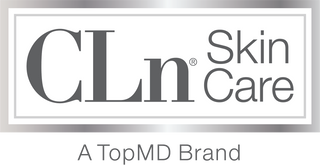
The causes of a red face are almost too numerous to mention. Excluding embarrassment and blushing, it could be atopic dermatitis (eczema), keratosis pilaris, and even skin or wind exposure causing one’s facial skin to turn red and conspicuous.
In cases in which loss of moisture may be contributing to the redness – as is the case in all of the skin conditions mentioned above – a moisturizer used at least once daily may be an effective means of reducing redness and dryness on the face.
So the question becomes – which one? In the sea of OTC moisturizers from which we have to choose, what should we be looking for when we choose one?
In the article to follow, we will break down the different kinds of moisturizer products available, alone or in combination, so that we can customize our choice of moisturizer to fit the condition of our skin – and so that lack of confidence in making a good choice will be one less cause for a red face.
What Are the Different Types of Moisturizers, and How Do They Work?
Depending on who you ask, there are three or four classes of moisturizers: occlusives, which trap moisture within the skin and prevent excessive external moisture coming in contact with it; humectants, which draw water from deeper skin layers into the more superficial layers, as well as draw moisture into the skin from the air; and emollients, which fill in tiny cracks in the skin. Depending on who you ask, ceramides are either considered occlusives or emollients, or its own class of moisturizer because they have the ability to both occlude and repair damaged skin.
With that as background, if the redness-prone skin on your face is dry, but susceptible to irritation from excess moisture and humid air, then a product with an occlusive or ceramide would be very useful. If your facial skin is very dry, though generally not irritated by excess moisture, a humectant would be an excellent choice. If your facial skin is not only red, but also prone to cracking, then either an emollient or a ceramide would be an excellent choice, as they both provide either a smoothing and/or skin repair effect.
Examples of occlusives include petrolatum, lanolin and cocoa butter. Humectants include glycerin and aloe vera. Emollients include oatmeal and niacinamides. Ceramides, as stated, might be “a little bit of everything.”
So How Do I Know If a Moisturizer Is Good For Me?
The answer here is: You’ve got to read the ingredients on the side of the bottle, and you’ve got to know our own face. But let’s use two real-life examples of OTC moisturizers; let’s read the ingredients; and let’s see what kind of red face is going to benefit the most.
Let’s start with the CLn Facial Moisturizer. It has ceramides in it – and so if your reddened facial skin is also drying out, the occlusive properties of the ceramides will trap water in and provide much needed hydration. Also, if harsh environmental conditions are causing your skin to crack – perhaps after a long day out on the slopes at altitude, or sitting at the beach in Cozumel – a ceramide would provide much needed skin repair on the superficial layer. But the CLn Facial Moisturizer also has niacinamides, which would also smooth over any roughness on red, irritated skin.
Now let’s look at the CLn 2-in-1 Gentle Wash & Shampoo. Though this product is a cleanser, and not a dedicated moisturizer, it contains the humectant glycerin. As a result, it would be an excellent choice for those who have dry skin and require frequent bathing – and its pairing with sodium hypochlorite makes it a doubly indicated product for a dry, red face caused by atopic dermatitis (eczema).
Soothe Redness and Restore Balance with CLn Skin Care
Finding the right moisturizer for redness-prone skin doesn’t have to be a challenge. CLn Skin Care’s gentle, dermatologist-recommended products are designed to hydrate, calm, and protect sensitive skin. By incorporating their facial moisturizer into your daily routine, you can help reduce redness, lock in hydration, and build a resilient skin barrier.
